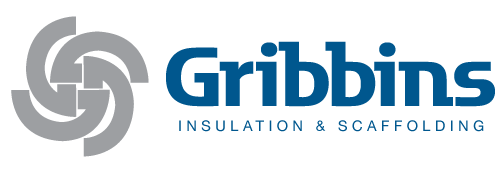SAFE Program featured in IOSHA Newsletter
 Gribbins Insulation is proud to showcase our article in Indiana Labor Insider, the semi-annual e-newsletter from the Indiana Department of Labor. Our article can be found on page 6 of the newsletter. The full text of our article is below:
Gribbins Insulation is proud to showcase our article in Indiana Labor Insider, the semi-annual e-newsletter from the Indiana Department of Labor. Our article can be found on page 6 of the newsletter. The full text of our article is below:
At Gribbins Insulation, we believe the extensive involvement of our employees in our safety program has strengthened the culture of safety in our offices and in the field. One of the best examples of this involvement is through our behavior based safety program, or as we call it, Surveying At-Risk For Elimination (SAFE) Program. Our SAFE Program trains employees to conduct peer-to-peer observations to determine at-risk behaviors and the barriers to those behaviors. Because the system depends on peer-to-peer observations, the training process teaches the employees how to discuss with the person being observed the at-risk behaviors they see, what can be changed to make their task safer, and how to determine the barriers to safe behaviors. The program relies strictly on a “no name, no blame” philosophy. This means that the observed employee is not named on the observation form, which eliminates the possibility of reprimand for a negative observation. To ensure the observation form is highly relevant, we update the form annually based on our analyses of incident statistics, audit findings, and violations from the previous year to determine specific focus areas. From the 2013 analysis, we are currently focused on six areas for 2014: eye protection, hand protection, body mechanics, working from ladders, working from scissor lifts, and the use of fall protection. This update process fosters more participation in the SAFE Program, which leads to greater communication between employees, a decrease in at risk behaviors, and an increase in the overall number of productive observations. The annual analysis also serves as a valuable tool for management when reviewing our safety program to find areas that need improvement.
We were introduced to the potential of the behavior based safety process in 2006 when several of our clients implemented programs. After seeing the valuable outcomes of the process, we decided to develop a custom-program for Gribbins Insulation to roll out to our other jobsites. During the process of making the SAFE Program, field employees contributed greatly to many aspects of the program, including the development of the mission, the creation of the form, the training process, and the analysis of the results.
The SAFE Program has resulted in direct reductions in violations and recordables as well as a stronger overall safety culture. Since implementing the SAFE program in 2010, our recordable and first aid injuries have decreased close to 30%. We have also seen a 35% reduction in the number of violations occurring during our jobsite audits. Another positive impact is the noticeable increase in hazard condition notifications by employees to the safety department. Such hazards can be listed on the SAFE Program observation form and turned in anonymously. We continue to be impressed with our employees’ dedication to these observations. Examples of hazards that have been reported and corrected through this process include: hazardous holes in parking lots; lockout-tagout issues while removing insulation with heat tracing; and the observation of a contract employee installing an air conditioning unit in an unsafe manner. In the last instance, when the Gribbins employee noticed the installer was above 6 feet without being tied off, our employee stopped the installer, asked him to come down , and discussed the situation with him to inform him he needed fall protection. Employees are also more comfortable talking to each other while performing their tasks and correcting each other on a peer-to-peer level. The whole idea of peer-to-peer observations and corrections has become commonplace, which is an outcome we did not expect to see so quickly. As a bonus, employees earn safety points in the Gribbins Insulation safety incentive program for their participation.
In 2012, we received Accreditation from the Cambridge Center of Behavioral Studies for World-Class Behavior-Based Safety, which is a testament to the dedication of our management team and our employees to the SAFE Program.
